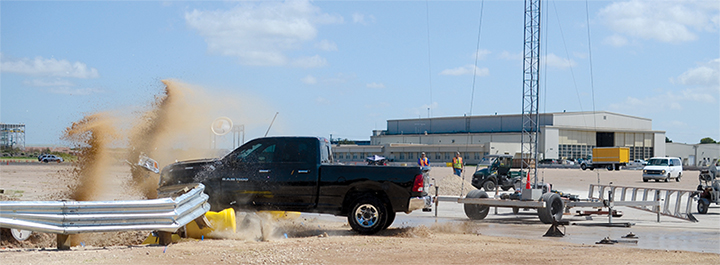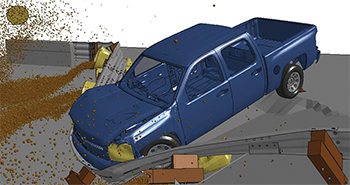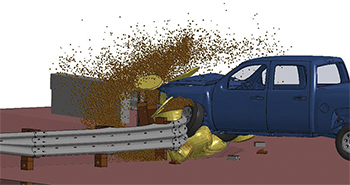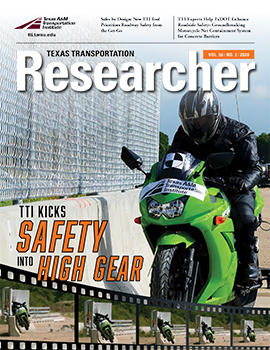Geometric challenges, special conditions and restrictions often make it difficult to accommodate an effective and compliant curved guardrail, particularly at intersections on low-speed roadways. Working with the Texas Department of Transportation (TxDOT), engineering experts in the Texas A&M Transportation Institute’s (TTI’s) Roadside Safety and Physical Security Division have developed a short radius guardrail system. The new standard meets the American Association of State Highway and Transportation Officials’ Manual for Assessing Safety Hardware (MASH) Test Level 2 (TL-2) performance criteria for use on low-speed roadways.
“When a secondary road or driveway intersects a highway close to a bridge, it’s difficult to fit the proper guardrail length along the primary roadway to effectively protect motorists from crashing into the drop-off and other hazards under the bridge,” explains TxDOT Transportation Engineer Christopher Lindsey, who worked with the project team. Roadside safety researchers have been seeking crashworthy solutions for a short radius guardrail treatment for two decades. According to Lindsey, “They have finally succeeded.”



TTI researchers first established TxDOT design requirements and site constraints for practical implementation on low-speed roadway intersections, where traffic travels at 44 mph or less. The initial design concepts came from engineering reviews of previous tests, including those previously conducted for the TTI-developed short radius MASH Test Level 3 guardrail treatment for high-speed roadways.
“Then, with repeated computer simulation models, we were able to add some innovation to the design by using sand drums behind a thrie-beam rail,” says TTI Research Scientist Akram Abu-Odeh, who led the project. “The sand drums absorb a good bit of energy as the vehicle is enveloped by the rail, slowing it down substantially.”
TTI conducted five full-scale crash tests in compliance with MASH TL-2 test conditions, modifying some test conditions by increasing the impact angle from 15 to 25 degrees. All tests were successful according to MASH test evaluation criteria. TxDOT now has a new standard for a crashworthy short radius design that can be implemented on low-speed roadways.
“The magic in the system is the sand barrels TTI designed to absorb the amount of energy needed to both shield the bridge rail and keep the car from going into the drop-off,” says Lindsey. “No other project has been able to accomplish that until now.”
